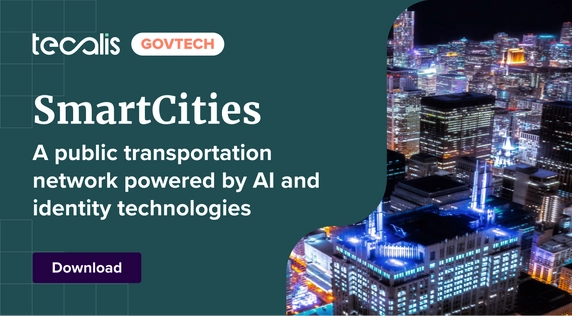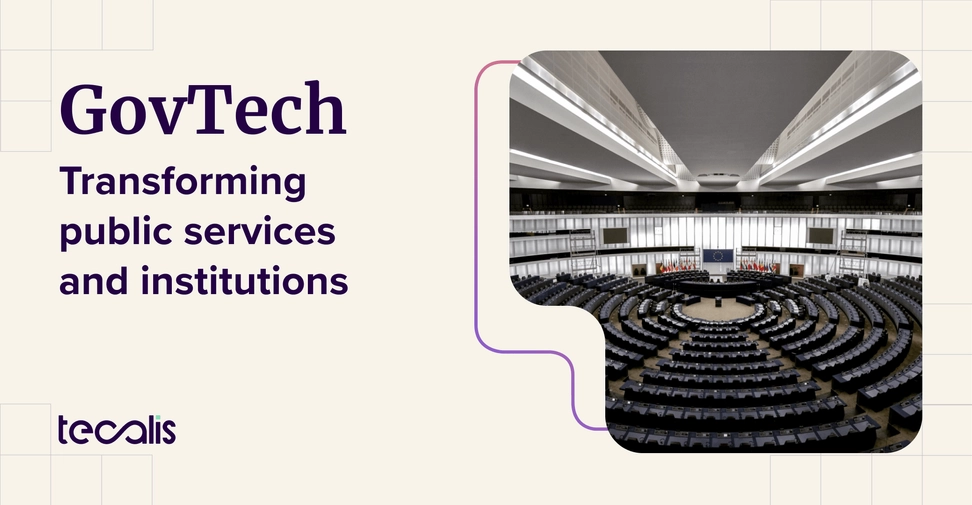Index
Get the latest news right in your inbox
GovTech responds to the need for digital transformation by public administrations in a globalized world, where digital natives are on the rise and most private companies have opted to partially or totally digitize a large part of their processes, especially after the healthcare situation.
The interest in facilitating communication between the public sector and citizens has been the main driver to be taken into account, generating synergies between technology companies and governments, giving rise to a GovTech ecosystem determined in terms of the creation and implementation of new processes with the aim of transforming entire societies and adapting them to the present time and its challenges.
On the other hand, the internal operations of ministries, municipalities, regional governments or public companies demand technological solutions that respond to their internal and external challenges, not only to offer public services but also to fulfil their mission and achieve the objectives of these institutions.
What does GovTech mean today?
The term GovTech, also known as electronic government, digital government or e-government, comes from the combination of the words "Government" and "Technology".
The concept refers to the design, creation, implementation and management of new technologies specially designed for the public sector in order to optimize processes and facilitate bureaucratic actions both for citizens, who are obliged to carry out procedures on a recurring basis and for public workers within local, regional, national or international corporations, as well as public companies of all kinds.
Thus, in the era of digitalization, public administrations, whether at a local or national level, have the opportunity to take advantage of technological solutions generated by highly specialized SMEs and startups.
Thus, we can say that GovTech is the use of digital tools and their correct implementation to boost the economy, improve public services, increase efficiency, effectiveness and reduce costs, ultimately being able to transform entire societies and generate public value by fulfilling its mission.
GovTech startups: key drivers of digital transformation
In recent years, a GovTech ecosystem has originated from the synergies generated between technology startups or SMEs and public administrations around the world, which has allowed governments to move forward with respect to traditional procedures that were already obsolete.
There are a number of key technologies that are driving the work of these agencies, among them, we can see how in recent years the following have emerged as the most decisive when it comes to providing a quick, simple and capable response to the challenges of all types of public agencies, from law enforcement agencies, ministries or municipalities to tax agencies and health:
- Facial recognition and identity verification.
- Automation, system interconnection and digitized process management.
- Artificial intelligence and machine learning.
- Big Data and blockchain.
- Authentication and citizen access, electronic signature and certified communication.
- OCR and validation of identity documentation.
- Fraud prevention and anti-money laundering tools.
While many of these technologies have been used by private companies for their customers, their integration and adaptation to work for the public sector have been a success that governments and citizens are applauding.
A paradigm shift in understanding digital management
Generating technological solutions for public services has become a challenge for many SMEs and startups in recent years as they have detected the lack of technological resources in the sector and seen how the relationship between governments and their inhabitants is increasingly affected, creating friction and inefficiencies for both parties.
The large-scale emergence of new, highly specialized companies, which have been able to detect the imminent need to bring citizens closer to a government that is increasingly disconnected from them, has been the trigger that has given rise to this phenomenon.
Both Startups and GovTech SMEs have strived to think and develop innovative and efficient solutions to revolutionize the public sector, promoting strategic use of technology in this area and optimizing its services and resources to the maximum.
Govtech consulting firms, which are also part of this ecosystem, participate in helping governments in the implementation and management of these new digital tools.
Digital public administration and its imminent transformation
Digital transformation in public administration has been a slow process, but one that has been driven in recent years by innovation from companies within a GovTech ecosystem and an increased need on the part of governments.
While this requires an initial investment by public administrations, public services are increasingly aware of the long-term benefits. In any case, GovTech companies and startups offer scalable and easily integrated pay-per-use solutions that governments can use at a truly optimized cost.
Thus, in an increasingly digitalized context, governments are trying to respond efficiently to social and citizen problems by taking advantage of all the opportunities and benefits offered by new technologies for different purposes.
Objectives and advantages of GovTech
The design and implementation of GovTech solutions in companies, organizations, institutions and public administrations have brought a series of clear and concrete benefits to citizens and their internal dynamics.
- Acquire new talents, empowering employees with tools that boost their productivity, unleash their creativity and make it easier to achieve the objectives of their tasks.
- Reinvent information systems, speeding up connection times between public administrations or between these and private companies.
- Streamline and facilitate bureaucratic processes, allowing public services to invest less money and save time.
- To increase citizen participation, strengthening ties between the people of a country, region or locality and their governments.
- Boost economic growth, contributing to an increase in GDP within a given territory.
- To provide greater transparency and traceability, recording the operations occurring in a specific process or workflow.
GovTech in today's landscape and what to expect in the near future
Today, many companies are investing in the development of GovTech solutions aimed at improving public administration. R&D in this field has developed in parallel with the generation of new products, sectors and services and has led to an increase in the GDP of the various countries where the economy has made a leap forward.
In 2019, the Declaration on Innovation in the Public Sector of the Organisation for Economic Co-operation and Development (OECD) was approved in a total of 40 countries. This draft specifies measures and principles with the aim of legitimizing innovation as a central and strategic objective of public sector organizations, as well as its use in the daily work of its operators.
In 2020, as a result of the situation generated by the health alert, there is an increased interest on the part of governments in the implementation of new digital tools in the administrative sector. Internet use increased by 40% in households around the world. This factor, coupled with the economic and social crisis generated, led to the need for governments to acquire measures adapted to the new context and its constraints, with a solution in innovation and technology implementation in their procedures.
This context has provided an opportunity to create a more solid Govtech ecosystem, driving digitalization within the sector in the face of the urgency of carrying out all kinds of procedures telematically or rethinking and streamlining certain processes in the most affected areas.
GovTech Index 2020
The creation in 2018 of a new practice on Digital Innovation in Government by the Development Bank of Latin America (CAF) to promote the use of data and digital technologies led to the creation of the current GovTech Index, published in 2020 and which constitutes an integral part within that project.
The GovTech 2020 Index is the first quantitative work created worldwide that measures GovTech ecosystems in Ibero-America (Spain, Portugal and Latin America). This document has 19 specific action paths to develop partnerships between private GovTech startups and the public sector.
It analyzes 28 indicators and primary sources to understand countries' performance potential in 7 policy dimensions: innovation environment, digital environment, industry environment, policy environment, digital governance, procurement frameworks and procurement culture.
Although the project initially focuses on the aforementioned territories, in the future it is intended to carry out a global GovTech Index in order to foster the development of the GovTech ecosystem with a greater supply and demand for innovation around the world.
Tecalis, a reliable provider of GovTech solutions
Tecalis is part of the GovTech ecosystem providing agile and innovative digital solutions that optimize the work of agencies that provide public services and improve their performance as well as being able to provide technological tools of the highest level to institutions, teams and strategic divisions of different governments.
In the New Society Talk "The future of e-voting (Spanish with English subtitles available)" Tecalis takes a closer look at the future direction of government digitalization and the possibilities that new technologies and their different applications can offer.

























